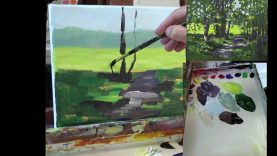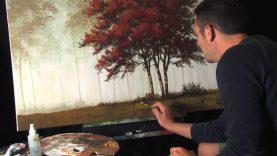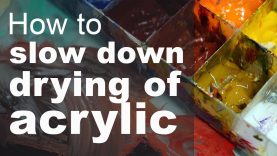Stonehenge – Full Moon Acrylic Time Lapse Painting
Stonehenge – The People’s Circle © by nagualero New “Full Moon Rising” Acrylic Painting Lesson Online Step by step instruction on the secrets of painting a beautiful big full moon, using acrylic paints: http://nagualero.com/lessons – Website: http://www.nagualero.com – Paintings: https://goo.gl/4OepSD
You can check out the exact brushes, paints and tools that I use here: http://nagualero.com/materials
Here is the video on the water misting bottle I use for acrylic painting:
https://youtu.be/sFsO1268-Ew
Here are some videos on color mixing:
http://goo.gl/z5Yqea
Share your results and look for support on our Facebook Painting group: https://www.facebook.com/groups/209753196119854/
___________________________________________________________________
Here are some other ways to help support the channel:
➤ Subscribe to my channel
➤ Hit the like button, comment and share the lessons with your friends.
___________________________________________________________________
Connect on Facebook: http://www.facebook.com/nagualero
Connect on Instagram: http://www.instagram.com/nagualero
Connect on Twitter: http://www.twitter.com/nagualero
___________________________________________________________________
________________________________________________
PAINTING DESCRIPTION:
Once completed, Stonehenge declined after two centuries. For years, this decline has been a mystery. But Professor Parker Pearson believes that it is explained by the culture of the ‘Beaker People’, known to have arrived in these isles around this time. He believes that their greater individualism and new material goods, including the first metal goods seen in Britain, put an end to the communal culture for which the monument had originally been created.
“What we’ve uncovered is compelling evidence that Stonehenge once united the people of Britain, attracting people from far and wide for Solstice gatherings, but also that the bodies and grave goods found on and around the site also offer an answer to the mystery of Stonehenge’s decline.” said Professor Parker Pearson.
The attraction of Stonehenge here is very simple: there are not yet enough facts about it to bury it in certainty, in a scientific final solution to all its questions. Its great present virtue is precisely that something so concrete, so sui generis, so individualized, should still evoke so much impressions of feeling and thought. (EOS 1980, 125) The other Stonehenge, this vast labyrinth of words, pictures, speculations, feelings, impressions, may never be quite so important as the scientists Stonehenge, but it is no less real in any deep or sane sense of human history. Almost everyone who visits the monuments feels this. Never can a building have had its actual scale and height vis-à-vis man so persistently exaggerated or its surroundings so romanticized, both before and after the Romantic Movement proper. It is not that artists, or ordinary visitors, want Stonehenge to be larger than it is. It is large than it is. (EOS 1980, 126)
I can agree with this to a very large degree, even though I have never seen the monument myself. Stonehenge has, and always will continue to intrigue people. Maybe it is not so much the truth about it, but the stories that emerge from it. For some of the myths concerning Stonehenge (Arthurian Legend, for example) are just so unforgettable that they will never die. Who knows what the purpose of Stonehenge is, but whatever the purpose, it has served itself well.
Written by Greg Tczap




















